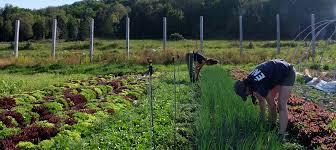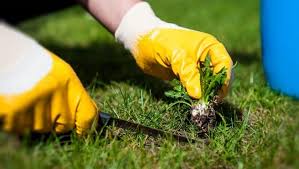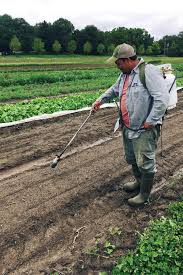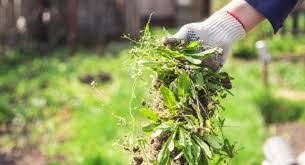Martin, H. J. et al. (1963) reported that weeds cost American farmers $5 billion annually in crop losses and the expense of keeping them under control. Therefore, understanding the principles of weed control and the various methods of controlling weeds are critical for the successful implementation of weed control programs.
In this article, the basic principles of weed control and various weed control methods are discussed. The cultural weed management system and its various elements are explained. Additionally, chemical, biological, and integrated methods of weed control are treated, emphasizing the strength, suitability, and limitations of each approach.
Definitions of Key Terms in Weed Control
1. Weed Control: Refers to actions aimed at restricting the spread of weeds and reducing their population in a given location.
2. Weed Eradication: This refers to the complete removal of all weeds and their propagules from a habitat. Weed eradication is challenging to achieve and uneconomical in most situations.
However, in certain cases, the problems posed by noxious weeds become so overwhelming that eradication is considered a desirable long-term goal.
For instance, Striga asiatica and Striga hermonthica are parasitic weeds that affect several cereal crops in tropical regions. These weeds do not respond to current weed control technologies, making eradication a long-term goal for these species.
Factors Necessitating Weed Eradication Programs
- Other weed control measures are ineffective.
- Weeds have many buried seeds that cannot be controlled by conventional practices.
- The infested field is small.
- The benefits of eradication outweigh those of alternative methods.
3. Weed Management: The ability to manipulate weeds so they do not interfere with the growth, development, and economic yield of crops. The major components of weed management include preventive weed control, cultural control, and biological and chemical weed control.
Read Also: Gray Leaf Spot (Stemphylium spp) – Symptoms and Damage Control
Principles of Effective Weed Control in Crops

- Weeds should be eliminated before they produce seeds. Ploughing fallow land at intervals helps prevent weed seed production.
- Weeding should take place before crop growth is hampered by weed competition.
- Perennial weeds should be tackled early in the rainy season when their food reserves are low.
- The cost of weed control should be balanced against potential crop yield loss if left uncontrolled.
- Proper crop spacing ensures full ground cover, reducing weed growth by limiting sunlight.
Factors Influencing the Effectiveness of Weed Control
- The type of crop grown.
- Timing of the weeding operation.
- Nature of the weed problem.
- Method of weed control.
- Types of weeds to be controlled.
- Cost of the operation and availability of resources.
- Environmental conditions before, during, and after weeding.
Cultural Weed Management System in Agriculture
Cultural weed management includes all aspects of good crop husbandry aimed at minimizing weed interference. These methods include hand weeding, mechanical weeding, tillage, mulching, burning, flooding, and crop rotation.
1. Hand Weeding: One of the oldest methods of weed control, involving hand-pulling, hand-slashing, hoeing, and mowing of weeds. In tropical regions, subsistence farmers often rely heavily on manual weeding.
Problems Associated with Hand Weeding
- Time-consuming and labor-intensive.
- Limited agricultural productivity due to restricted land area for manual weeding.
- Organizational and logistical challenges with human labor.
2. Hand Pulling: Used primarily in cereal crops like rice. It is especially useful where chemical weeding is not practiced.
Advantages of Hand Pulling
- No additional tools required.
- Effective in broadcast-seeded crops and removing escaped weeds.
Disadvantages of Hand Pulling
- Labor-intensive.
- Expensive in areas with limited labor.
- Not effective for controlling perennial weeds.
3. Hand Hoeing: The most commonly used method of weed control in tropical regions. It is faster than hand pulling and suitable for various cropping systems.
Advantages of Hand Hoeing
- Controls both annual and perennial weeds.
- Provides a clean seedbed and loosens soil.
- Suitable for small farms.
Disadvantages of Hand Hoeing
- Labor-intensive and expensive where labor is scarce.
- Increases the risk of soil erosion.
- Difficult to control perennial weeds as propagules may be buried deep.
4. Hand Slashing: Primarily used for bush clearing, non-crop areas, and plantation crops. A machete or sickle is commonly used.
Advantages of Hand Slashing
- Minimizes erosion.
- More labor-efficient than hoeing.
Disadvantages of Hand Slashing
- Rapid weed regrowth.
- Risk of crop damage during slashing.
- High labor requirements.
Read Also: Recommended Number of Ruminant Animals per Housing Unit for Fattening
Mechanical Weeding in Weed Management

Mechanical weeding involves using machines or animals for weed control. This method allows more work to be accomplished compared to manual weeding. Tools like ploughs and harrows are commonly used before and between crop rows.
Advantages of Mechanical Weeding
- Increases productivity and economic returns.
- Reduces labor drudgery.
- Increases land cultivation efficiency.
Disadvantages of Mechanical Weeding
- High initial cost of machines, often unaffordable for small-scale farmers.
- Requires skilled maintenance and training.
- The availability and cost of fuel can increase operational expenses.
Weed Control Using Animal-Drawn and Machine-Powered Weeders
In many tropical farming systems, effective weed control is crucial for maintaining crop productivity. Farmers often resort to both animal-drawn and machine-powered weeders depending on available resources and environmental conditions. Below is an analysis of both methods, along with alternative weed control strategies like tillage, burning, flooding, and mulching.
1. Animal-Drawn Weeders: Animal-drawn weeders are commonly used in the arid and semi-arid savanna tropics, but their use is limited in humid and sub-humid regions due to the presence of the tsetse fly, which transmits trypanosome spp.to cattle.
Advantages of Animal-Drawn Weeders
i. Low capital investment in draft animals as a power source.
ii. Low maintenance costs, since animals can be fed on available forages.
iii. Animal droppings improve soil organic matter.
iv. No specialized training is needed to operate the weeder and guide the animal.
v. Suitable for small and large farms alike.
vi. The implements are within the technological competence of most tropical farmers.
Disadvantages of Animal-Drawn Weeders
i. Work output depends on the health of the animals and the skills of the handler.
ii. Precision in cultivation is often difficult to achieve.
iii. Limited use in regions with tsetse fly or diseases affecting draft animals.
iii. Cultural and religious practices in some areas may prevent the use of animals in farming.
2. Machine-Powered Weeders: Machine-powered weeders rely on fossil fuel-powered machines for weed removal, often offering greater efficiency than animal-drawn weeders.
Advantages of Machine-Powered Weeders
i. Timely and reliable weeding compared to manual or animal-drawn tools.
ii. Can handle large areas of farmland efficiently.
iii. The engine can be used for other farming tasks like tillage, planting, and transportation.
iv. Reduces drudgery and labor uncertainties.
Disadvantages of Machine-Powered Weeders
i. High capital investment and maintenance costs for equipment.
ii. Unsuitable for non-row crops, limiting application.
iii. Spare parts and maintenance services may be difficult to access in some regions.
3. Tillage for Weed Control: Tillage has been a traditional weed control method for centuries. In addition to routine tillage, farmers often perform two specific types of tillage for weed management: delayed tillage and blind tillage.
Types of Tillage
i. Delayed tillage: The land is tilled, weeds are allowed to emerge, and the soil is cultivated again before planting crops, reducing weed pressure.
ii. Blind tillage: Crops are planted after land preparation, and light cultivation is done after weeds emerge but before crop emergence.
4. Burning as Weed Control: Burning is widely practiced to clear plant growth before cropping and destroy weed seeds on the surface.
Types of Burning
- Uncontrolled burning often leads to unintentional destruction of vegetation and property.
- Controlled burning is more regulated, improving crop production by reducing vegetation and litter.
- Direct burning uses specialized burners for an efficient and smoke-free burn.
Advantages of Controlled Burning
i. Low-cost way of clearing excess vegetation.
ii. Adds nutrients like P and K to the soil.
iii. Reduces soil acidity and destroys pests and pathogens.
Disadvantages of Controlled Burning
i. Loss of soil organic matter and important elements like sulfur and nitrogen.
ii. Soil temperature during burning may not be high enough to destroy all weed seeds.
5. Flooding: Flooding is another effective weed control method, especially for paddy rice and taro. Weeds are killed by depriving them of oxygen in waterlogged conditions.
Advantages of Flooding
i. Helps kill soil-borne fungi and nematodes.
ii. Creates anaerobic conditions that suffocate dry-land weeds.
Disadvantages of Flooding
i. Not effective for well-established aquatic weeds.
ii. Requires level terrain and a reliable water source for impounding.
6. Mulching: Mulching involves covering the soil with non-living material to suppress weeds by cutting them off from sunlight.
7. Crop Rotation: Crop rotation is an effective strategy in weed control as it disrupts weed cycles by changing crops each season.
Biological Methods of Weed Control
Biological weed control involves using natural enemies, microorganisms, or manipulating environmental conditions to manage weeds.
1. Biological control with invertebrate animals: Insects such as parasitic beetles in the U.S. control the Klamath weed, and in Australia, the Argentine moth borer has been effective against the prickly pear cactus.
2. Microbial control: This method uses fungi, bacteria, or viruses as biocontrol agents against specific weed species.
3. Live mulch: Perennial legume cover crops used as live mulch suppress weeds, reduce soil compaction, and improve soil organic matter.
Chemical Methods of Weed Control

Herbicides are chemicals that kill or inhibit the growth of unwanted plants.
- Pre-planting herbicides are applied before planting crops to control existing weeds.
- Pre-emergence herbicides are applied after planting but before crop emergence, targeting weed seeds or young weeds.
- Post-emergence herbicides are applied after crops have emerged, selectively killing weeds while sparing the crop. Herbicides can also be classified as contact (affecting parts they touch), systemic (traveling through the plant), or soil-acting (preventing weed seed germination).
Preventive Methods of Weed Control
Prevention is a key aspect of weed management.
- Preventing weeds from setting seeds through post-harvest control or mowing helps reduce future infestations.
- Using clean seeds for planting avoids introducing new weed species.
- Cleaning farm machinery prevents weed spread between fields.
- Fallowing is another preventive method, where land is left to rest to naturally reduce weed populations, with live mulch systems proving beneficial.
Integrated Weed Management (IWM)
IWM combines cultural, biological, and chemical methods to sustainably manage weeds without causing harm to the environment or crop yields.
- No single method can fully control all weed problems, making an integrated approach essential.
- Weed resistance to frequently used herbicides can be minimized through IWM. By applying a range of strategies, farmers can reduce their dependency on any single weed control method while maintaining effective and long-term management.
Do you have any questions, suggestions, or contributions? If so, please feel free to use the comment box below to share your thoughts. We also encourage you to kindly share this information with others who might benefit from it. Since we can’t reach everyone at once, we truly appreciate your help in spreading the word. Thank you so much for your support and for sharing!

